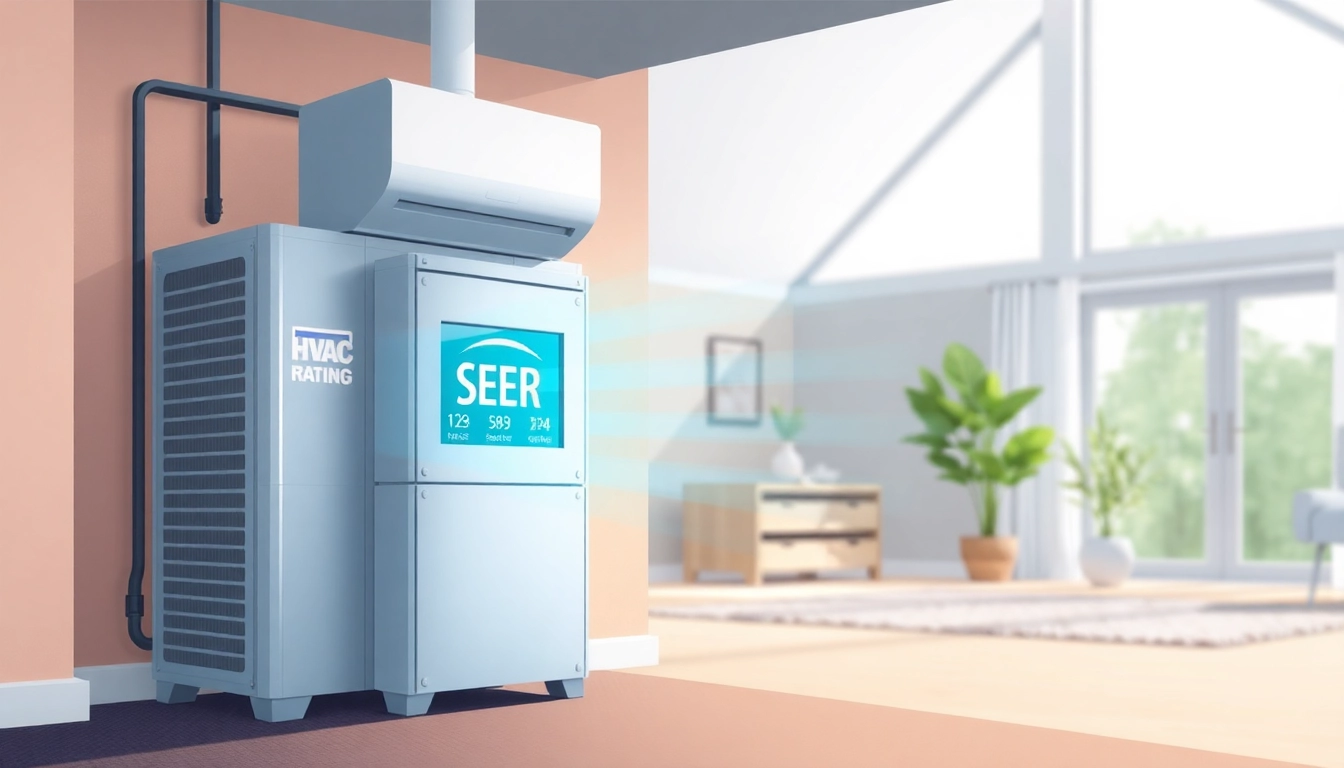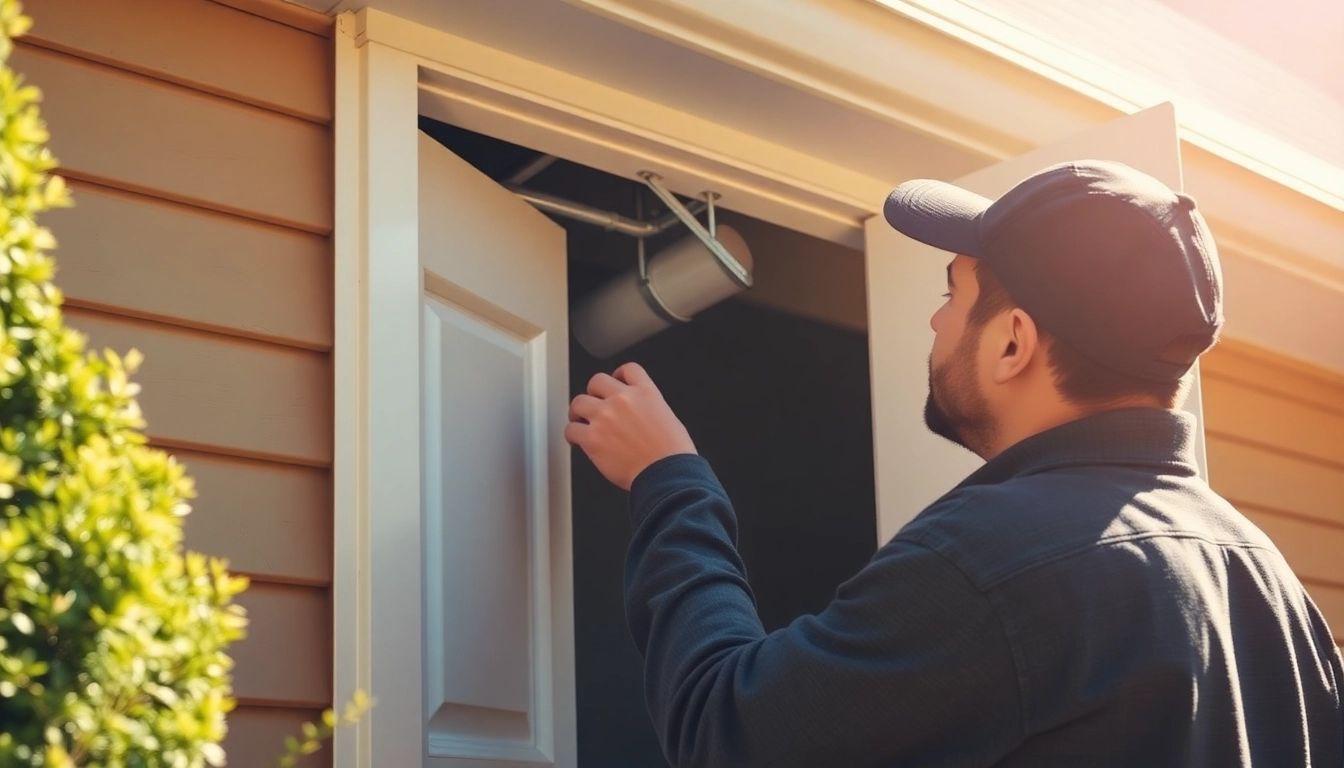1. What is SEER Rating in HVAC?
a. Definition and Importance
SEER stands for Seasonal Energy Efficiency Ratio, which is a critical measurement in the HVAC industry. It defines the efficiency of air conditioning systems over an entire cooling season. Specifically, the SEER rating is calculated by dividing the total cooling output of an air conditioner (measured in British Thermal Units, or BTUs) by the energy consumed (in watt-hours) during that same period. This ratio plays a vital role in determining how effectively an HVAC system can cool a space without wasting energy, making it essential for both homeowners and professionals in the heating and cooling sector.
Understanding what is seer rating in hvac is crucial because it impacts both the operating costs and the environmental footprint of cooling systems. A higher SEER rating indicates a more energy-efficient unit, lowering energy bills and reducing greenhouse gas emissions. As energy efficiency becomes increasingly important in today’s environmentally conscious world, knowing how to assess SEER ratings is beneficial for making informed purchasing decisions.
b. How SEER Ratings are Calculated
The calculation of SEER ratings involves a standardized formula that offers a comprehensive view of an air conditioning unit’s performance. The formula is as follows:
- SEER = Total Cooling Output (BTUs) / Total Energy Consumption (Watt-Hours)
This ratio is assessed over an entire cooling season, typically defined as the time frame during which cooling is required across various climates. The measurement factors in both operational performance and energy consumption, allowing consumers to make efficient comparisons between different models. Technically, testing is conducted under controlled conditions that account for variations in temperature and humidity, ensuring a fair evaluation across the board.
c. The Difference Between SEER and SEER2 Ratings
As energy efficiency standards have evolved, so too have the metrics used to evaluate HVAC systems. SEER2 is the updated standard that was implemented to better reflect real-world performances of HVAC systems. While the original SEER rating provided valuable information, SEER2 incorporates changes including:
- Updated testing methodologies that consider performance under various realistic driving conditions.
- New blower performance metrics which reflect actual airflow and energy consumption more accurately.
Consequently, SEER2 ratings are poised to be more reliable indicators of energy efficiency, making them increasingly important for consumers willing to invest in eco-friendly and cost-effective cooling solutions.
2. Why SEER Ratings Matter for Homeowners
a. Energy Savings Based on SEER Ratings
One of the most significant advantages of understanding SEER ratings lies in the potential for energy savings. The energy consumed by HVAC systems can account for a large portion of a household’s overall energy costs. By choosing units with higher SEER ratings, homeowners can achieve considerable savings on their monthly utility bills. For example, moving from a SEER rating of 14 to 16 can generate up to 13% energy savings, translating into real financial benefits over time.
b. Impact on Environmental Sustainability
Energy consumption not only affects your wallet but also influences the environment. High-efficiency HVAC systems, indicated by elevated SEER ratings, contribute to a reduced carbon footprint. By consuming less energy, these systems generate less demand on power generation resources, which often rely on fossil fuels. Consequently, adopting high SEER-rated units can lead to a more sustainable living environment, supporting efforts to combat climate change.
c. Long-Term Cost Benefits
While initial investment costs may be higher for HVAC systems featuring high SEER ratings, the long-term savings can outweigh these expenses significantly. Homeowners who select these systems typically recoup their investment through lower energy bills within a few years. Additionally, high SEER-rated products may lead to fewer repairs and maintenance costs over time, given their more efficient operation. Understanding these economic advantages is central for homeowners making buying decisions about HVAC systems.
3. How to Choose the Right SEER Rating for Your Needs
a. Assessing Your Home’s Cooling Needs
When considering an HVAC purchase, the first step is to thoroughly assess your home’s specific cooling requirements. Factors may include the size of the space, insulation quality, local climate conditions, and the orientation of your home. These elements decide not only the size of the cooling unit needed but also help determine the most suitable SEER rating. Typically, larger or poorly insulated homes may benefit from higher SEER ratings since they demand more cooling energy to maintain comfortable temperatures.
b. Considering Climate and Usage Patterns
Geography plays a crucial part in selecting the right SEER rating. In regions with prolonged cooling seasons, such as the Southern United States, investing in high SEER-rated systems can yield substantial energy savings over time. Similarly, understanding how often the system will run—based on personal habits and climate conditions—is essential. If the air conditioner will be used frequently, a higher SEER rating results in better savings in the long term.
c. Balancing Initial Cost and Long-Term Savings
While higher SEER-rated units come with higher upfront costs, the associated long-term savings can be compelling. Homeowners must weigh their financial capacities against the efficiency benefits these systems provide. Calculating the return on investment (ROI) by estimating energy savings can guide decision-making. Tools and calculators are available that can help potential buyers determine how different SEER ratings will affect their energy bills and overall HVAC costs.
4. Common Misconceptions About SEER Ratings
a. Higher SEER Always Means Better
A common misunderstanding about SEER ratings is the belief that higher always means better. While it’s true that higher ratings indicate greater efficiency, they may not be the best choice for everyone. Factors such as initial investment, serviceability, and actual performance in a specific application should be considered. Sometimes, systems with a moderate SEER rating might be more suitable based on a homeowner’s individual cooling needs and budget.
b. Misunderstanding Efficiency Gains
Another misconception is that only a significant jump in SEER ratings—such as from 14 to 20—will yield major efficiency gains. In reality, even small improvements in SEER ratings can result in meaningful savings over time. For instance, the difference between 15 and 16 SEER may not seem large, but it can generate considerable energy savings when projected over multiple years.
c. SEER Ratings and System Performance
Some people erroneously assume that a high SEER rating guarantees superior system performance. Though energy efficiency is undoubtedly important, the real-world performance of an HVAC unit relies on various factors, including installation quality, regular maintenance, and proper sizing of the system. Homeowners should consider both SEER ratings and additional performance metrics when evaluating HVAC unit options.
5. The Future of SEER Ratings in HVAC
a. Trends in Energy Efficiency
As technology continues to advance, expectations for energy efficiency are also rising. Future trends suggest that SEER ratings will reflect enhanced performance standards, aligning with growing consumer demand for eco-friendly solutions. The industry is likely to see an increasing number of high-efficiency systems coming equipped with smart technology that optimizes energy consumption further, making ongoing improvements in SEER ratings likely.
b. Innovations Impacting SEER Measurements
Innovations in measurement techniques and HVAC technology are evolving as manufacturers strive to produce units that meet environmental standards while offering cutting-edge performance. The implementation of technologies like variable speed compressors, advanced insulation, and smart thermostats all contribute to improved SEER ratings. Monitoring efficiency using real-time data analysis will allow future systems to adapt more dynamically to energy demands.
c. Regulatory Changes Affecting Ratings
With federal and state governments focusing on climate change and energy efficiency, regulatory changes are expected to influence SEER ratings significantly. As policies continue to evolve, manufacturers may face new guidelines that require even higher efficiency benchmarks, leading to a phase-out of older, less efficient systems. Homeowners should stay informed about upcoming legislation that may affect their choices and the performance expectations of HVAC systems.



